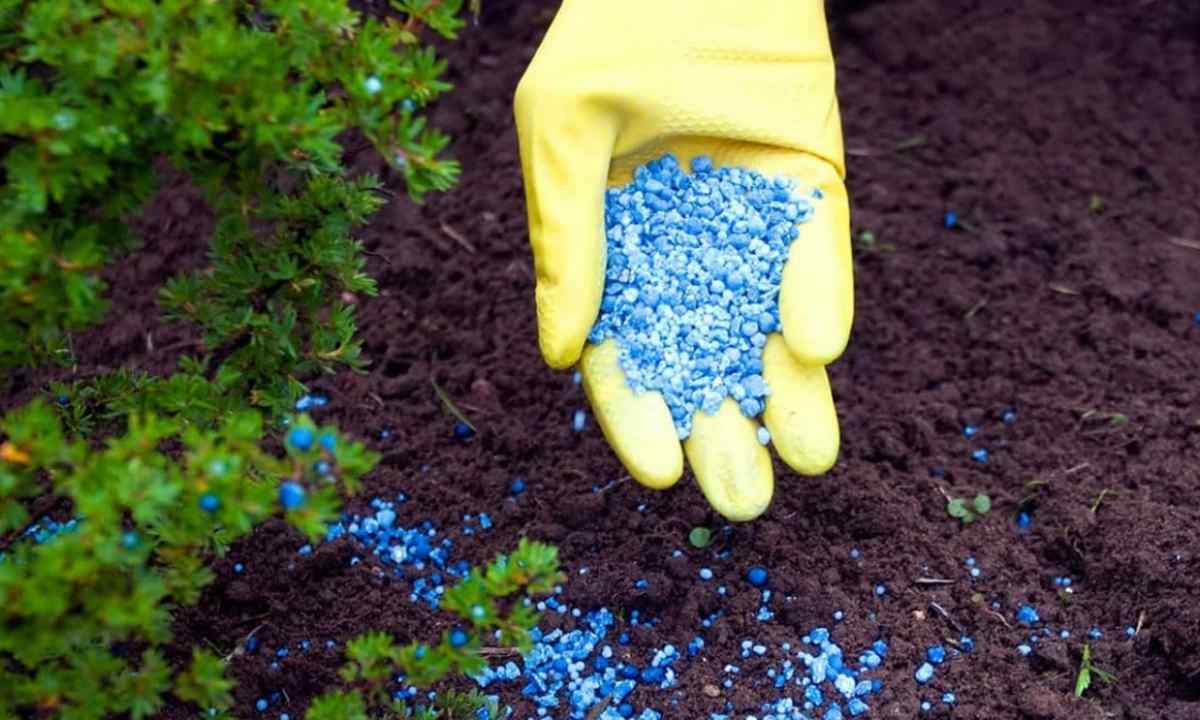Experienced gardeners and gardeners apply organic and mineral fertilizers, only at the correct combination of that and others the maximum effect is reached. The organic chemistry is usually brought in the fall, the bird's dung and mullein can be applied in the form of fertilizing. It is necessary to apply mineral fertilizers skillfully too not to burn the soil and roots of plants.
It is required to you
- - mineral fertilizers.
Instruction
1. All mineral fertilizers are divided into potash, nitric, phosphoric and difficult. Nitrogen fertilizers work quickly and are well dissolved in water. They can be applied (except ammonium sulfate) in a dry form to fertilizing and in the form of water solutions.
2. In ammonium nitrate there are 33-35% of nitrogen, in the spring it brings superficially. This fertilizer slightly acidifies the soil therefore it is possible to add lime or chalk to it if the earth on the site already sour.
3. Sulfate of ammonium contains 20-21% of nitrogen, it well dissipates and too slightly acidifies the soil. Urea is the most concentrated nitrogen fertilizer, content of this substance in it 44-46%. It is applied to the main introduction, in the form of fertilizing and not root power supply. Urea decays in the open air therefore it is necessary to dig in at once it to the soil at superficial introduction.
4. Nitrogen fertilizers need to be introduced carefully, especially if the soil easy. Never exceed the doses specified on packing of means not to burn roots of plants and to avoid withering of leaves. The excess of nitrogen can cause long growth, reduce winter hardiness and worsen quality of harvest.
5. You introduce phosphoric fertilizers to the soil more deeply, there, where all mass of roots is located. Plain superphosphate powdery for 19% consists of phosphorus, granulated – for 20%. Both of them are dissolved in water and form white deposit.
6. Double superphosphate is produced only in the form of granules, it contains 48-50% of useful mineral, is perfectly dissolved in water, does not leave a sediment, does not cake and is convenient in application.
7. Fertilizer chloride potassium incorporates 53-54% of mineral, is well dissolved. There is potassium salt, in it the content of useful substance is less – 30-40%. Sulfate potassium contains 50% of mineral. In sulfate of potassium there is no chlorine therefore it is applied most often than other medicines. You bring it both in the spring and in the fall, mix with other fertilizers.
8. Now on sale there are a lot of fertilizing mixes. Their structure is approximately identical. Always attentively read the operation manual of means not to destroy plant, and to bring them benefit.
9. Do not forget about wood ashes which contain in the structure potassium, phosphorus, lime and microelements. It can be brought both in the spring and in the fall, without being afraid to exceed dose slightly.
10. Do not forget that nitrogen is necessary to plants for growth, it is brought in the spring and at the beginning of summer. Phosphorus and potassium is required at the end of season for the best ripening of harvest. It is not necessary to apply nitrogen fertilizers in the fall, all of them equally will not keep till spring.
